Review
Fleet News says goodbye to the Swace after a six-month loan with the country in the grip of a, depending on your point of view, driver shortage/fuel shortage, Brexit related, media-induced spasm of panic buying at filling stations.
The combination of a 1.8-litre petrol engine and electric motor (aka ‘normal hybrid’) means Suzuki can claim an impressive, combined cycle 64.2mpg for the Swace with a total range of more than 700 miles on a full tank.
So, with this performance you can feel one notch below EV drivers on the smug scale as you eek out the miles, hoping the ‘fuel crisis’ will be on the wane before you need to refuel. Thankfully, as I completed a week driving nearly 400 miles, I achieved an mpg of 63.1mpg. The cost of fuel was £39.29.
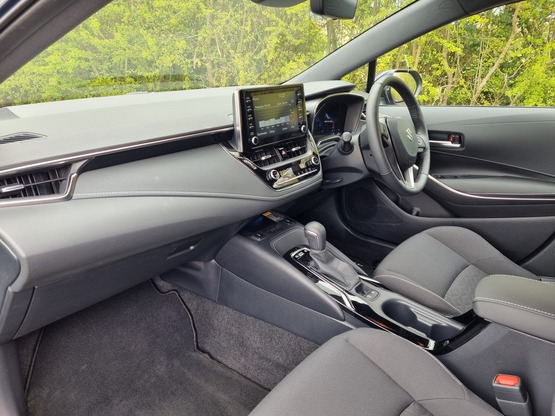
Petrol and diesel prices have been increasing, from a relative flatline position, since about November. A month ago the cost would’ve been £38.93, a year ago £32.70.
The Swace’s drive train technology is good for the nerves right now and your finances in the longer term. Let’s not forget its CO2 emission figure of just 99g/km – respect for the planet and a respectable benefit-in-kind rate for 2021/22 of 23%. And that 1.8 engine is your only choice.
We say goodbye to the Swace grateful for its simplicity in providing economic and environmental benefits.
Aside from the no-hassle electric motoring (you don’t plug it in), it’s very simple to get to know. There’s nothing radical in the cabin, except if you’re new to the mobile phone wireless charging pad in front of the gear stick.
If you can live without that and the park assist and front and rear parking sensors, choose the entry-level SZ-T, over the SZ5. You still get an eight-inch touch screen with smart phone connectivity, a rear camera, heated front seats and steering wheel and dual zone climate control.
With the automatic gearbox, comfortable ride, and estate car load capacity the Swace is a no nonsense allrounder.
Fuel costs are favourable
After considering the comparative running costs and tax liabilities of the Swace versus competitors namechecked by Suzuki, this time I look at fuel costs.
The Swace’s ‘normal’ hybrid system of 1.8-litre petrol engine plus an electric motor - charging as you drive and no plugging in - means one of its USPs, alongside hassle-free EV driving, is, Suzuki says, “excellent” fuel economy.
The price of unleaded petrol at the time of writing is 134.68 pence per litre.
The three competitors are the Toyota Corolla Touring Sports 1.8 VVT-h 122 Trek, Skoda Octavia 1.5TSI 150 SE L and Ford Focus 1.5 L Ecoblue.
Having looked at websites offering ‘real world fuel economy figures’ and found no mention of the Swace, I’ve used manufacturers’ official mpg figures.
The Swace has a WLTP combined fuel consumption figure of 64.2mpg (for reference I’m currently at 62mpg after five months’ driving).
In an 80,000 operating cycle the cost of fuel, at the above rate, is £7,653.
The Corolla’s fuel costs would be £8,746, based on the official fuel consumption figure of 56.5 mpg. Next up, the Octavia would cost £9,796 over 80,000 miles, based on 50.4 mpg on the combined cycle.
Finally, the Focus, with 60.1mpg combined fuel consumption, would cost £8,163.
So, after a strong performance in a running costs comparison and now fuel costs the Swace appears to be not just a competitor, but a very strong contender for your choice list.
How does it compare to rivals?
The Swace is the product of a partnership between Suzuki and Toyota, based on the Corolla Touring Sports. It has its own front-end design and steering wheel, a more limited engine choice and trim levels, but – as outlined by Suzuki national fleet sales manager Lee Giddings at CCIA last month – a more comprehensive specification list.
But how does the Swace compare more widely on the ‘fleet fundamentals’, such as tax and efficiency against this natural competitor and other brands’ estates?
The Swace has a WLTP combined fuel consumption figure of 64.2mpg (I’m enjoying a high of 62.1mpg after four months’ driving) and 103g/km CO2 emissions.
With a 24% tax rate in the current year and a P11D price of £29,094, the benefit-in-kind figure is £6,983, leading to tax payable at the 20% rate is £1,397 and at 40%, £2,793.
In terms of employee’s costs, the first-year road tax is £150, Class 1A NIC £964, running costs over four years/80,000 miles is 37.79p per mile and the residual value £8,805.
A comparable 2021 model year Corolla Touring Sports (1.8 VVT-h 122 Trek) with a lower P11D list price of £29,005, but higher CO2 emissions of 113g/km means a BIK liability of £7,541 and therefore higher tax bills of £1,508 and £3,017 respectively.
Year one road tax is £20 more, insurance £77 and running costs 1.4 pence per mile more. The total cost across the operating cycle comes out at £30,232 for the Swace versus £31,360 for the Toyota.
Giddings also said the Swace competed in the estate sector against the Skoda Octavia and Ford Focus.
So, let’s look at the stats.
First in the ring is the Octavia 1.5TSI 150 SE L. Its list price at £26,220 is considerably less than the Swace’s, but the latter’s low CO2 emissions come into play (103g/km versus 126g/km), meaning the Skoda’s BIK figure is £7,604 leading to higher tax bills: 20% rate of £1,521 and £3,042 at 40%.
Looking at employer’s costs, first year road tax is £180, insurance £1,049 and the running costs pence per mile total 38.7 – equating to £30,960 for the operating cycle. Finally, the Octavia’s RV is £7,191.
Turning to the Focus, I’m comparing the Swace with the 1.5TSI 150 SE L. It’s a similar story of lower list price - £26,100 – but higher CO2 emissions – 123g/km.
It means the BIK charge of 28% - £7,308 on a list price of £26,100 – and tax bills of £1,462 and £2,923 depending on your rate.
Year on road tax is £180, insurance £1,009 and running costs of 38.4ppm, or £30,720 across the operating period. And the RV? £6,378.
So, while the Swace has a higher P11D price and offers little in the way of engine and trim choice, its low CO2 emissions figure and high mpg rate make it a viable competitor to three key competitors. But with only 2,000 sales expected in the UK in a full year, getting hold of one might be a challenge.
A perfect fit for fleets?
Suzuki brought a selection of its vehicles to our ‘drive and decide’ event, Company Car In Action, in June. I managed to talk to Lee Giddings, national fleet sales manager, as he oversaw the test drives of 15 brand cars - including two Swace - about the car’s prospects in the fleet market.
Of the plan for 2,000 UK sales in a full year, he is confident the “vast majority” will be sold into fleet channels.
“Our entire range is a perfect fit for fleets, whether that be public sector, salary sacrifice, SME and so on,” Giddings said.
“But our most recent additions to the range in Swace and Across really are built for fleet, with full hybrid or PHEV respectively, low CO2 and excellent BIK advantages. Furthermore, we can look forward to a new S-Cross coming soon.”
Acknowledging competition from, most obviously the Toyota Corolla Touring Sports, as well as the Skoda Octavia estate, Ford Focus estate and Kia Ceed Sportswagon, Giddings was confident several factors will make the Swace the winning choice.
“The Swace meets multiple drivers needs in one unique and outstanding package,” he said.
“It includes elegance, driving comfort, efficiency and practicality.”
He also described the car as being “packed to the brim with advanced safety features that add peace of mind as standard”, including pre-collision system, lane tracing assist and road sign assist.
“All of this comes in addition to Suzuki’s world renowned and consistently award-winning reliability.”
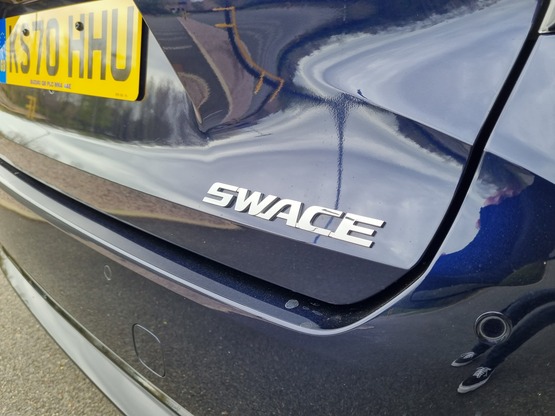
But why would someone choose the Swace over the Toyota Corolla estate, on which it is based (with some front-end alternations)?
“Swace has an advantage in standard equipment compared with the closest equivalent Corolla, in either Icon or Icon Tech.”
And sure enough, a review of the comparative spec lists of the Corolla and Swace shows six features not available in the Toyota but included on the Suzuki: power folding door mirrors, auto dim rear view mirror, rain sensing wipers, heated steering wheel, rear privacy glass and floor mats.
The Icon Tech includes front and rear parking sensors and sat nav, where the Swace doesn’t.
How its hybrid engine works
Fleets or drivers considering choosing the Swace will discover that gaining an understanding of the power sources in this hybrid estate car is of primary importance.
Because there’s no requirement to plug it in (no range anxiety, no searching for charging stations) the relationship between the 1.8-petrol engine, the battery and the driver is a passive one, but an understanding of what is happening is useful to know.
Suzuki puts it this way, “the electric motor charges itself as you drive”. The electric motor starts the car and continues to be engaged at low speeds; with normal driving, including light acceleration, the engine and motor (powered by the engine via a generator) drive the vehicle.
If the battery is low, the petrol engine will charge it in normal driving. Become more aggressive, you’ll use both the engine and motor, with electricity supplied to the latter via the generator and the battery. Finally, in slowing down, wheel rotation is used to generate electricity and charge the battery.
A CVT automatic transmission is offered as standard. Three drive modes – normal, eco and sport – are available dependent on driving conditions or driver’s preference.
Combined with the battery and an adequately powered engine (122PS; 0-62mph in 11.1 seconds) you will have a smooth, if unengaging, drive. Suzuki points out that, as an estate car, the low centre of gravity, plus distribution of engine and battery weight, means more stability and, therefore, driver comfort on corners.
All is quiet when in electric mode, but accelerate hard and there is a rapid increase in revs – and noise – until the CVT finds a higher ratio. It’s a little disconcerting next to the serenity of electric driving.
In a month with the Swace I’ve achieved 60.1mpg compared with the official WLTP combined figure of 64.2mpg. With our office reopening soon and the return to a 60-mile commute, I expect to improve on that in the remaining four months with the car.
Suzuki Swace Hybrid joins our fleet
The second product of the business partnership between Suzuki and Toyota is the Swace, joining the Fleet News’ fleet for six months. It is based on the Toyota Corolla estate – with front design changes - and follows the introduction of a rebadged Rav4, the Across.
The purpose of the 2019 partnership, which saw the two buy a stake in each other companies, to unite “Toyota’s strength in electrification technologies and Suzuki’s strength in technologies for compact vehicles”.
And so, like the Across, the Swace is an addition to the Suzuki range and is a hybrid, combining an electric motor with a 1.8-petrol engine. There’s no plugging the Swace in: It’s 3.6kW battery can power the car in EV drive mode on short distances – Suzuki suggests in residential areas in unsociable hours, “in garages and indoor carparks” – and at low speeds.

I’ll look at details in next month’s review, but needless to say the petrol/battery combination contributes to a WLTP combined fuel consumption of 64.2mpg and CO2 emissions of 99g/km – just inside the band for 23% tax in 2021/22 (and increasing to 24% for the years 2022 to 2025).
The Swace was launched in the UK in December with SZ-T and SZ5 models. Our test car is the latter and while specification is generous across both models, the SZ5 comes with a series of improvements including front and rear parking distance sensors, parking assist and wireless mobile charging in the centre console.
> Interested in comparing electric vehicle data? Check out our EV tool.
> Interested in ensuring the efficient use of EVs. Check out our dedicated editorial sections: Insight & policy | EV news | Charging & infrastructure | Costs & incentives | Benefit-in-kind | EV case studies | EV road tests
Jeremy has been a journalist for 30 years, 25 of which have been in business-to-business automotive. He was a writer and news editor on Fleet News for three years. He is Bauer B2B’s head of digital operations helping to manage the digital assets of Fleet News, and sister-brands Automotive Management and RAIL.
In 2025 he is an Association of Online Publishers awards judge.
For six years Jeremy was Automotive Management editor.


Specs
| Manufacturer | Suzuki |
| Model | Swace |
| Specification | Swace Estate 1.8h 122 SS €6 SZ5 CVT Auto 21MY |
| Model Year | 0.00 |
| Annual VED (Road tax) | £0 |
| BIK List Price | £29,084 |
| CO2 | 103g/km |
| BIK Percentage | 25% |
| Insurance Group | N/A |
| CC | N/A |
| Fuel Type | Petrol Hybrid |
| Vehicle Type | Estate car |
| Luggage capacity (Seats up) | 5litres |
Running Costs
| P11D | £29,084 |
| Insurance group | N/A |
| Fuel Type | Petrol Hybrid |
| Cost per mile | 81.10ppm |
| Fuel | 8.11ppm |
| Depreciation | 70.73ppm |
| Service maintenance and repair | 2.26ppm |
Rivals
Info at a glance
-
P11D Price
£29,084
-
MPG
64.2 (WLTP) -
CO2 Emissions
103g/km -
BIK %
25% -
Running cost
3 Year 60k : N/A 4 Year 80k : N/A -
Fuel Type
Petrol Hybrid

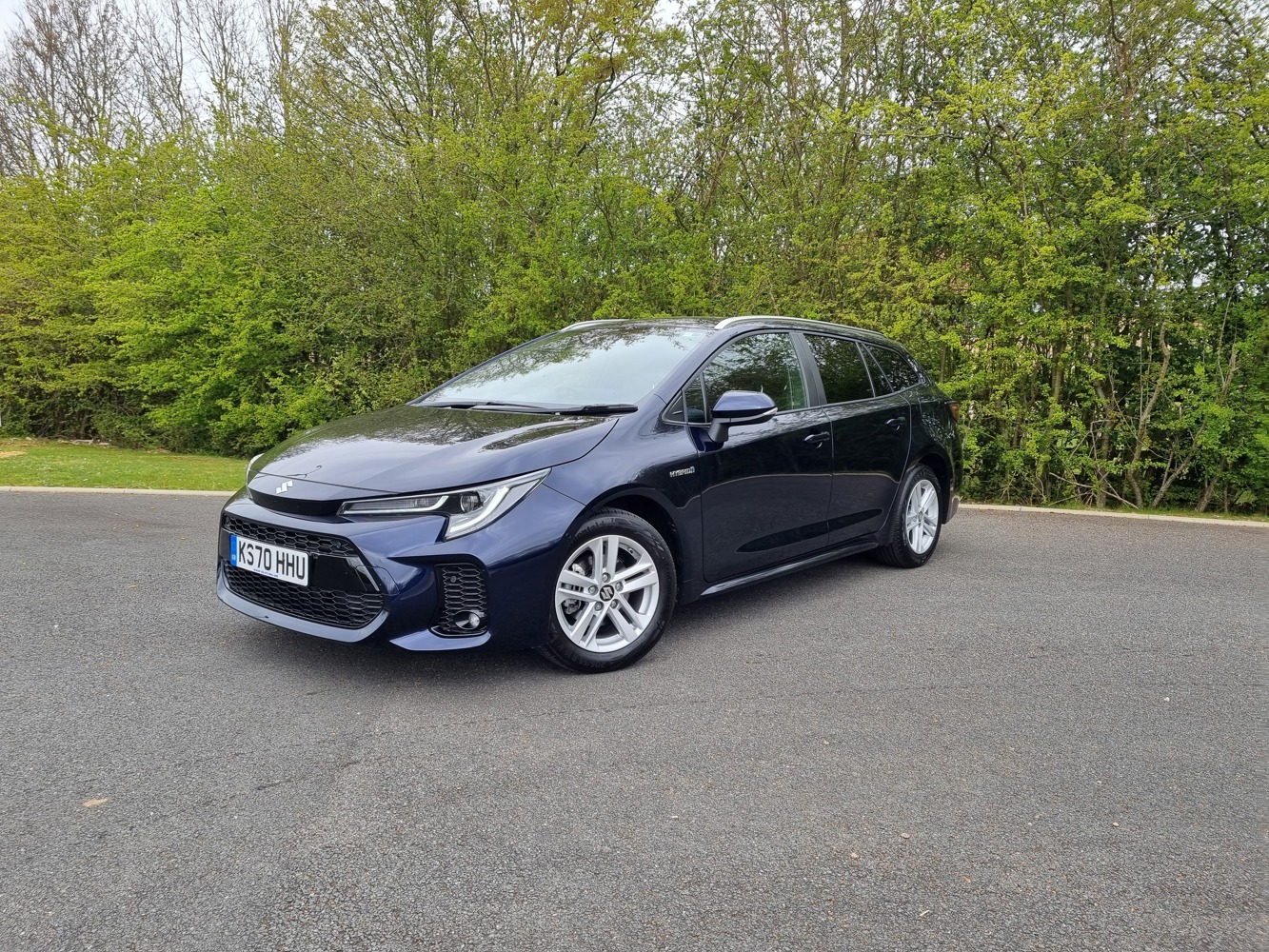
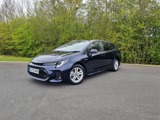

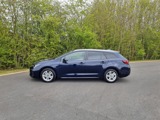
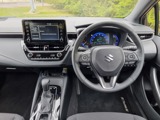
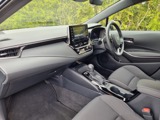


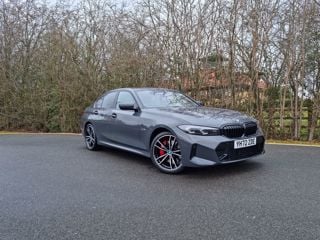


 Petrol Hybrid
Petrol Hybrid
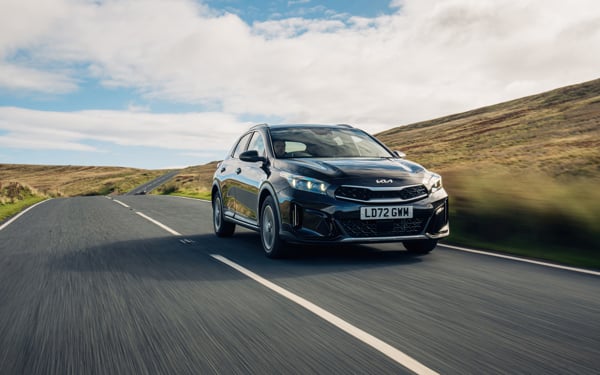

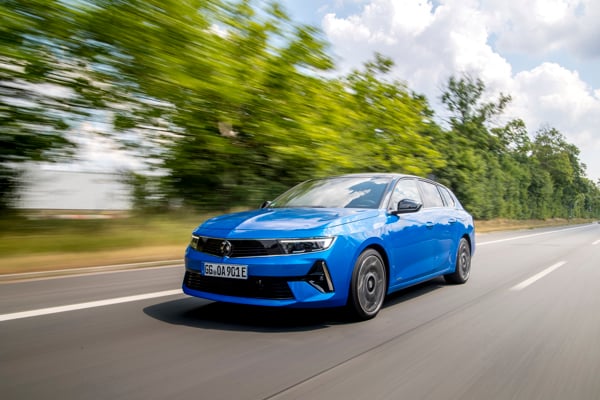
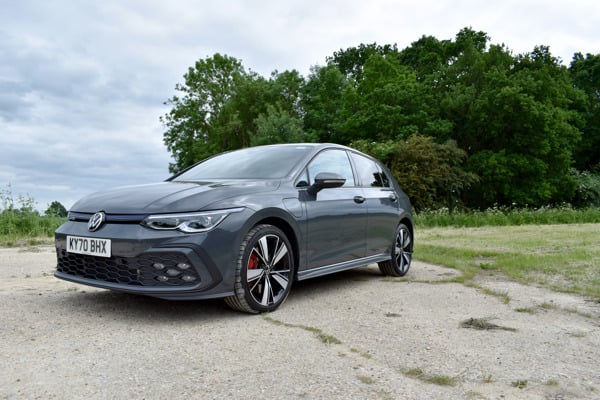
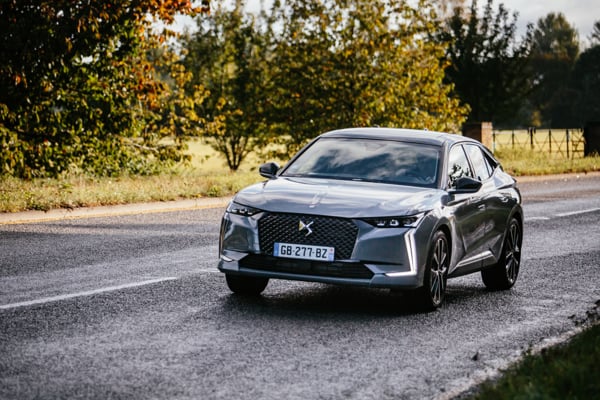

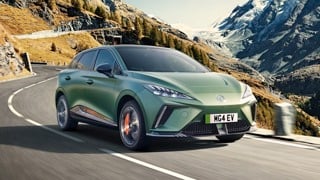















Login to comment
Comments
No comments have been made yet.